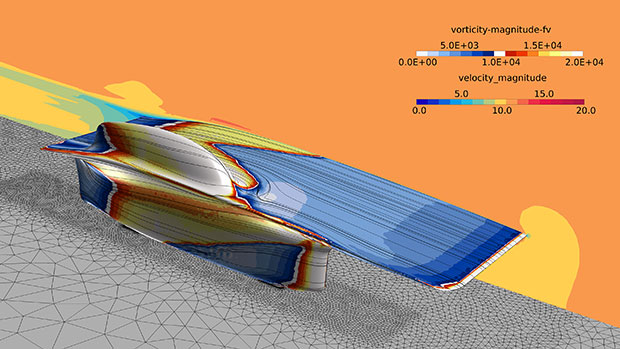Check Out HyperWorks 2017
Latest News
March 16, 2017
Dear DE Reader:
When the A-Team has a major new release, there’s nothing to do but discover what’s in it for you. Today’s Check it Out link offers the scoop on the 2017 edition of Altair’s HyperWorks simulation and development suite. It seems that this edition has something for everyone.
At the multimedia-rich landing page at the far side of today’s link, you can explore the full—and I do mean full—details on the new features and new products making their debut in HyperWorks 2017. The short list is that HyperWorks 2017 has lots of goodies for jobs like model-based development, nonlinear structural analyses, multidisciplinary analyses, lightweight design and optimization. Perennial favorites like modeling and meshing, multiphysics and electromagnetism have their share of enhancements, too.
The site begins with four overview videos introducing the 2017 version of the Altair solvers and the key ways you interact with the solutions: model building and assembly, nonlinear analysis and optimization and, finally, pre- and post-processing. The videos run two to three minutes.
That’s just a taste. Scroll down to really learn what’s new in the 2017 edition of the individual component technologies that make up the HyperWorks CAE suite.
 This simulation using AcuSolve’s turbulence models depicts surface vorticity contours of a flow transitioning from laminar to turbulent on a solar race car. Model courtesy of University of Michigan Solar Car Team. Image courtesy of Altair Engineering Inc.
This simulation using AcuSolve’s turbulence models depicts surface vorticity contours of a flow transitioning from laminar to turbulent on a solar race car. Model courtesy of University of Michigan Solar Car Team. Image courtesy of Altair Engineering Inc.Alphabetically speaking, I’m not sure if the technology names in the HyperWorks platform run from A to Z. But they do go from AcuSolve for solving CFD flows to W, with an added technology called WinProp for propagation modeling and radio network planning. Many of the updated technologies, such as HyperMesh, OptiStruct and RADIOSS, are household names.
You’ll find the technologies arrayed there. Click on the ones that you use or wish you used. Let’s take MotionSolve for multibody dynamics systems analysis as an example. They all follow a similar format.
Hitting its “learn more” link opens a new tab. You’ll learn that it has more than 20 enhancements, such as 2D curve to curve contact, a graphical leaf spring builder and a complete set of 1D to 3D co-simulation with solidThinking/Activate. Most enhancements have a complementary animated GIF. There’s even a 16-minute video demonstrating MotionSolve 2017’s enhancements in technical detail.
The HyperWorks 2017 landing page is an excellent piece of content. It’s thorough, informative, technically rich and, unlike me, pleasant to look at. Grab your lunch, a fresh can of Red Bull and prepare to take notes. Hit today’s Check it Out link and take this one in. Good stuff.
Thanks, Pal. – Lockwood
Anthony J. Lockwood
Editor at Large, DE
Subscribe to our FREE magazine, FREE email newsletters or both!
Latest News
About the Author
Anthony J. Lockwood is Digital Engineering’s founding editor. He is now retired. Contact him via [email protected].
Follow DE





